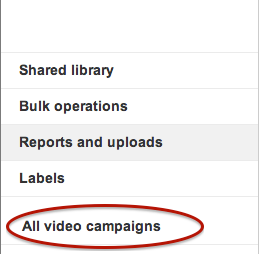You’ve successfully pitched YouTube advertising to your client. You have a great video and the AdWords account is linked to the client’s YouTube Channel. It’s time to start advertising! Ranging from settings to optimizations, I’ve put together seven tips to run successful AdWords YouTube campaigns. The first four tips speak to campaign setup while the last three deal with optimization.
4 Tips For Campaign Creation
Segment YouTube Search from In-View Videos (and consider avoiding Video partners on the Display Network to start)
There are three different networks that can be targeted for video campaigns, as outlined in the image below.
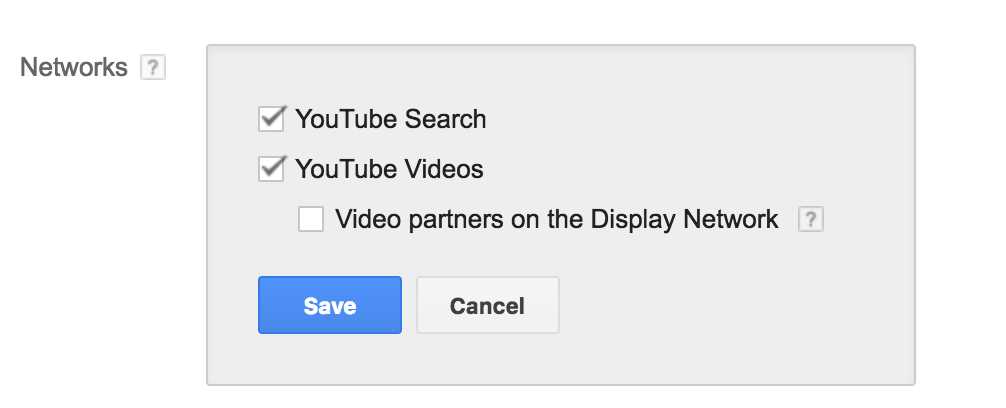
Similarly to Display and Search, segmenting YouTube Videos from YouTube Search is recommended. Each type of advertising produces different results as viewer behavior varies. For YouTube Videos, the video ad can be shown before another video is played. YouTube Search allows the video ad to show up within the video search results. By segmenting the two, different targeting can be tested for each type of viewer.
If you choose to use Video partners on the Display Network, keep the targeting audience small to maintain additional control over how the budget is spent. When you select your targeting group, Google will give you an estimated views-per-day. This is a good way to measure the size of your targeting audience. Google Display allows for a larger amount of traffic for your videos, however, it can easily spend to the daily-allotted budgets.
Create YouTube Remarketing Lists
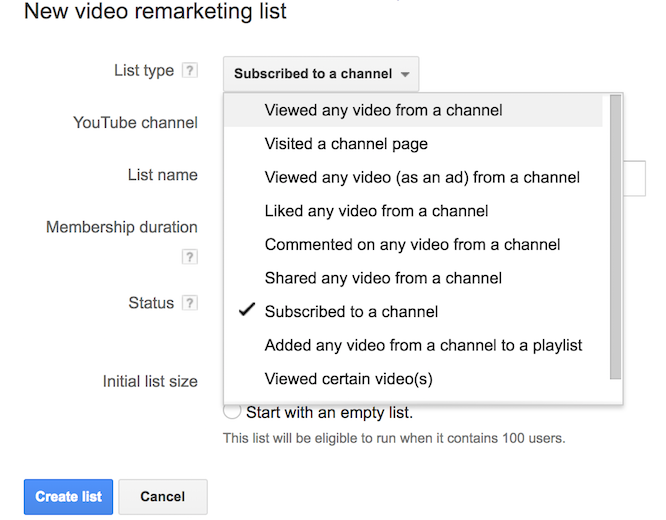
Once an AdWords account and a YouTube Channel are linked, you have the ability to create remarketing lists from your YouTube viewers. While using a website remarketing list is a great introduction to video campaigns on YouTube, the option to remarket traditionally to your YouTube viewers is an added perk. Depending on the popularity of the YouTube channel or video, we have the ability to create remarketing lists capturing any individual viewing any video on a channel or a specific list that targets more precise actions, such as commenting on a video.
Small Targeting Groups
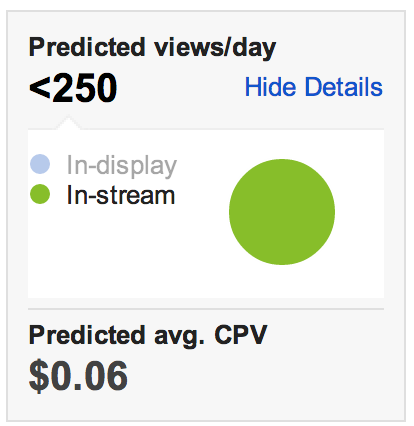
As you create your targeting group by adding keywords, placements, interests or audiences, Google will give you a predicted amount of views-per-day. With a small budget, I would recommend having 500 – 1000 predicted views. By creating small targeting groups, you will be able to better optimize as your campaigns begin to spend. While overlapping keywords and interests is an effective way to cut down the size of the predicted audience, being able to quickly identify which placement, keyword or interest is spending without hitting goals will make optimizations that much easier later on.
Keep Your Budgets Small
Depending on the size of your targeting group, YouTube can easily spend to the maximum daily budget. By setting lower budgets at the beginning, it will prevent any large amount of unprofitable views over the first few days. This action adds an extra safety net.

The graph above shows a new campaign that was launched with contextual keywords. Though the estimated audience was under 500 views/day, the account easily surpassed that number. By keeping the budgets small to start, we are able to minimize unexpected volume.
3 Tips For Campaign Optimization
Review Column Options
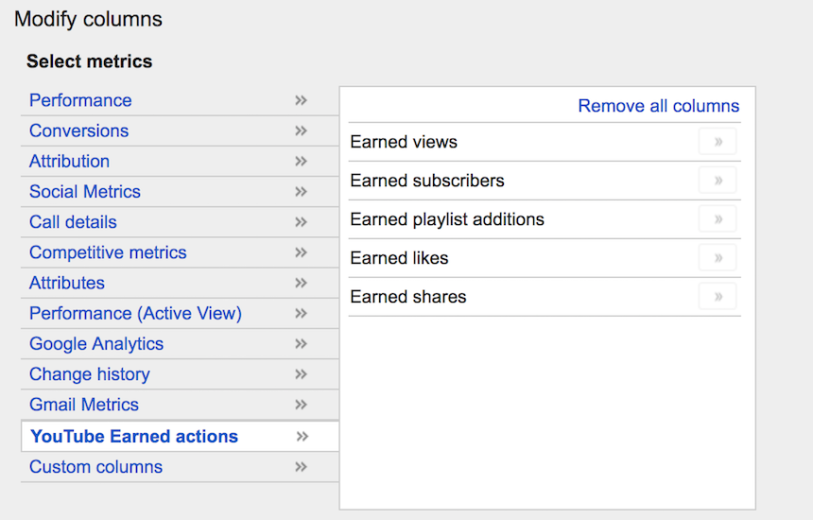
Columns can be customized to show metrics that fit most directly with your desired goals. If you are looking for video engagement, the ‘Earned Views’ column shows how many viewers watch the video to completion. Earned subscribers, playlist additions, likes and shares are additional engagement with your other videos and channels after viewing the video ad. Conversions will show up in the ‘Conversions’ columns.
Before judging the success or failure of a campaign, it is important to look at all metrics. If a large percentage of viewers click to the website, but do not convert, this might be a campaign that becomes a traditional remarketing campaign in AdWords. There is value in identifying targets that might bring in low-conversions, but have 20% of viewers watch the entire video. By reviewing each metric, we can identify what stage in the search funnel that the campaign is targeting.
Conduct Placement Reports

Similar to the Display Network, conducting placement reports on a regular basis is a good way to cut spend coming from unqualified traffic. Checking targeting for specific keywords, if you are advertising on YouTube search or placements, is the best way to shape campaigns for their best performance. For any low converting video campaign, I look at clicks to the website verses actual views. If there is a low click-to-website rate, then I will exclude the placement from my targets.
Try Different Targeting Options

Because average cost-per-view can be less than $0.10, there is some wiggle room to play with different targeting options. In the account above, the average cost-per-conversion in AdWords is over $100. While YouTube conversion rates are very low in this account, when a YouTube conversion does occur, the cost-per-conversion is much lower than the account average, because of the low cost-per-view.
Final Thoughts
It is important to remember that YouTube advertising behaves differently than other Google AdWords campaign types. Do you have any additional recommendations for the person just starting out or tips for optimizations?
Continue Reading About Advertising on YouTube
- Grow Your Account With Youtube Ads
- A New Perspective For Youtube Advertising
- Google To Let Advertisers Use Search Data For Youtube Ad Targeting
- Integrating Youtube Promoted Videos into Your PPC Account
- Boost Your Remarketing Performance by Targeting Youtube
- How To Sell Youtube Video Ads as A New PPC Initiative
- 15 Adwords Alternatives
———-
Originally published in 2014, updated on 12/18/2017 by Kelsey Hadaller, Senior Account Manager at Hanapin Marketing!



